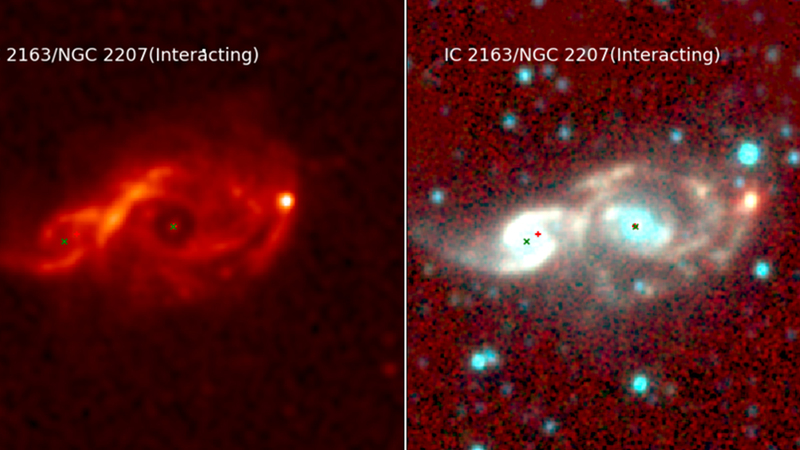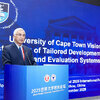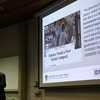UCT study probes infrared-radio connection in galaxies
02 October 2025 | Story Thami Nkwanyane. Photo Supplied. Read time 4 min.
The classic connection between infrared and radio light in galaxies has been given a new edge in a recent University of Cape Town (UCT) study.
Titled “Probing the infrared/radio correlation of the full IRAS Revised Bright Galaxy Sample with MeerKAT and the VLA”, the study is published in the Monthly Notices of the Royal Astronomical Society journal, and is led by PhD candidate in astronomy Malebo Moloko. It explores how galaxies’ glow in infrared light is linked to their powerful radio emissions, using cutting-edge data from South Africa’s MeerKAT radio telescope and the United States’ Very Large Array (VLA).
Stars are born in dense clouds of dust and gas. The most massive stars heat up their surroundings, making the dust shine in infrared light. Later, when these stars explode as supernovae, their remnants accelerate electrons to near-light speeds, producing synchrotron radiation observable at radio wavelengths. This physical chain of events underpins the famous infrared–radio correlation: a cosmic rule of thumb connecting star formation to radio emission.
The team was able to distinguish individual components in some of the interacting galaxies in their sample. However, separating isolated and merging galaxies was challenging. “In some cases, galaxies were already in advanced stages of merging, making it impossible to distinguish their individual properties,” said Moloko.
“We were able to build a large and robust sample to test this correlation in unprecedented detail.”
Some of the evidence was that interacting galaxies tend to show a weaker infrared–radio correlation and greater scatter compared to isolated galaxies. This suggests that interactions drive extra radio emission and heightened star formation activity, reshaping the balance astronomers often rely on to measure how galaxies evolve.
“By combining MeerKAT and VLA data, we were able to build a large and robust sample to test this correlation in unprecedented detail. This helps us understand not only how galaxies form stars, but also how cosmic interactions stir up the energy we observe across the spectrum. What excites me most is that these findings show the power of using multi-wavelength observations to disentangle the complex interplay of galactic processes,” Moloko added.
A personal journey
The study is also personal for Moloko. Among the co-authors is the late Professor Tom Jarrett, Moloko’s first PhD supervisor, who was a South African Research Chairs Initiative (SARChI) chair in multi-wavelength astronomy at UCT and a pioneer in infrared astronomy. He passed away in 2024.
“He taught me that to understand the most distant galaxies, we must first study those in our cosmic backyard. This paper continues that vision, celebrating both the science and Prof Jarrett’s legacy.”
Dr Lucia Marchetti, Moloko’s current supervisor and co-author of the paper, added: “We are glad that these findings can finally be shared with the community, and we are sad that Tom is not here with us to share this achievement. Nevertheless, this paper and Malebo’s PhD thesis represent one of the many examples in which Tom’s legacy lives on, providing new results even after his passing.”
 This work is licensed under a Creative Commons Attribution-NoDerivatives 4.0 International License.
This work is licensed under a Creative Commons Attribution-NoDerivatives 4.0 International License.
Please view the republishing articles page for more information.










